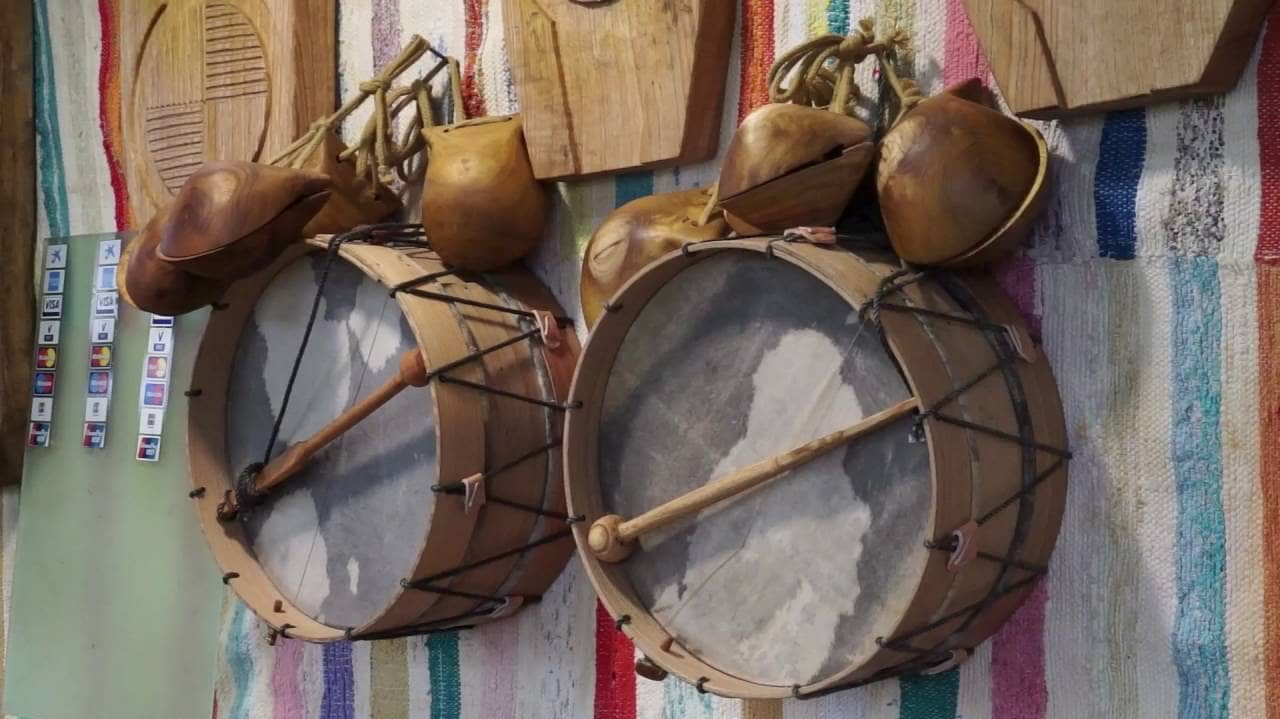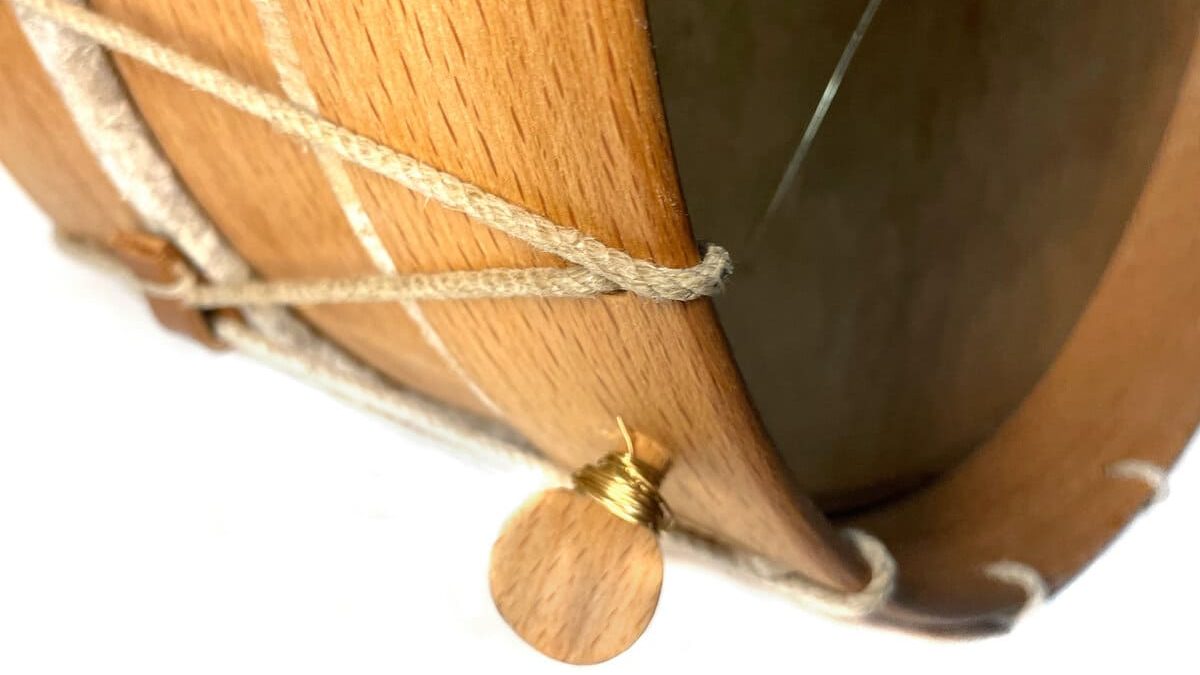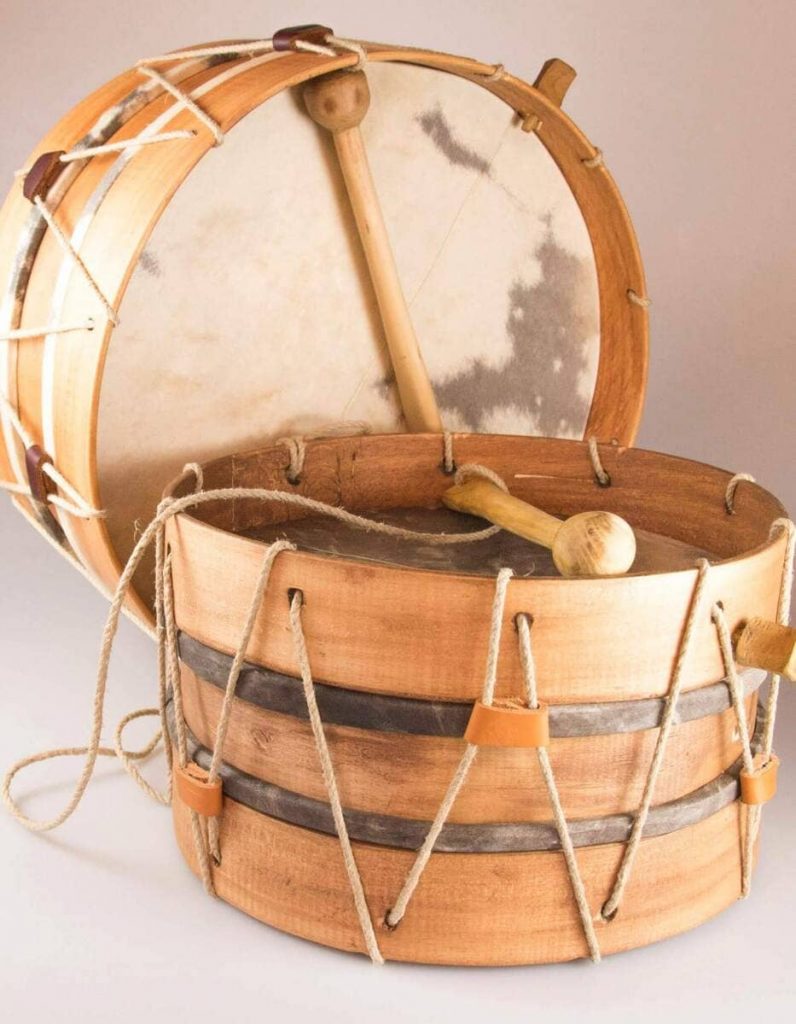The canary drum is a popular instrument that is handmade in the Canary Islands. The main materials used are wood and baifo or goat skin. In addition, they have another very important part which is the rope and the metal plate.
A popular instrument with a long tradition
The popular instruments in the Canary Islands vary according to the islands, although all of them have a common element: the well-known folkloric groups. These groups include string instruments as well as wind and percussion instruments.

However, it has been on the islands of La Gomera and El Hierro where the tradition of percussion instruments has remained intact over time. In La Gomera, the chácaras stand out among the groups,as we already mentioned in a previous article dedicated to this instrument, together with a small drum; and in El Hierro, the chácaras or "castañetas" similar to the Andalusian ones, the pito, which resembles the transverse flute, and drums of larger dimensions predominate.
The canary drum: gomero drum and herreño drum
The different types of drums existing in the Canary Islands probably derive from the drums that formed part of the bands that accompanied the military troops during the conquest of the Archipelago. There are several types of drums, which have clear differences between them. Below we will talk about the drums of La Gomera and El Hierro.

The gomero drum
The gomero drum is a percussion instrument typical of the island of La Gomera and inherited from the aboriginal islanders. It is made of wood and baifo skin patches. It is played standing up, with the drum in vertical position, hitting it with a stick that produces a characteristic vibration of this instrument. In addition, it accompanies the chácaras in the traditional dances and songs of the island.
The use of this instrument is engraved in the history of the Gomeros and represents one more sign of their identity as a people. It has accompanied them in different areas of their lives and is essential, for example, to play the Tajaraste Gomero or the Dance of the Drum.

As already mentioned, it is made by hand and the main materials are wood, the most common being mimbrera, and baifo skin. Another very important part is the metal cord, responsible for the peculiar vibrating sound of this instrument. The gomero drum measures about 35 cm in circumference, consists of a box of 8 cm in height and two hoops of 4 cm to which there is tied a liña barquera, that is to say, a rope with which the baifo skin drumheads are tightened .
The herreño drum
The herreño drum is a percussion instrument typical of the island of El Hierro. It is handcrafted with wood and baifo skin patches and it is played standing up, hitting it with two beech wood drumsticks. It is robust, of great sonority and larger than the Gomeran drum. It is the typical sound, together with the chácaras and the pito herreño, of the Bajada de la Virgen de los Reyes, the most important festivity of the island.

The herreño drum can be made in different sizes, from small for children to large volumes and about 12 kg in weight. The ropes used to tighten the baifo skin drumheads are placed in a Y-shape. A striking feature of the drums of El Hierro is the coloring, green on the upper and lower circumference and brown in the center. They are played in pieces such as the Baile de la Virgen or, with a single stick, in others such as the Baile del Vivo.
If you want to know more about Canarian instruments and craftsmanship, here are some links that may be of interest to you: The legacy of traditional Canarian pottery; Typical Canarian costume, tradition and culture; Timple, know the history of the Canarian instrument.
Paula Vera
Photos: Government of the Canary Islands, youtube.com



